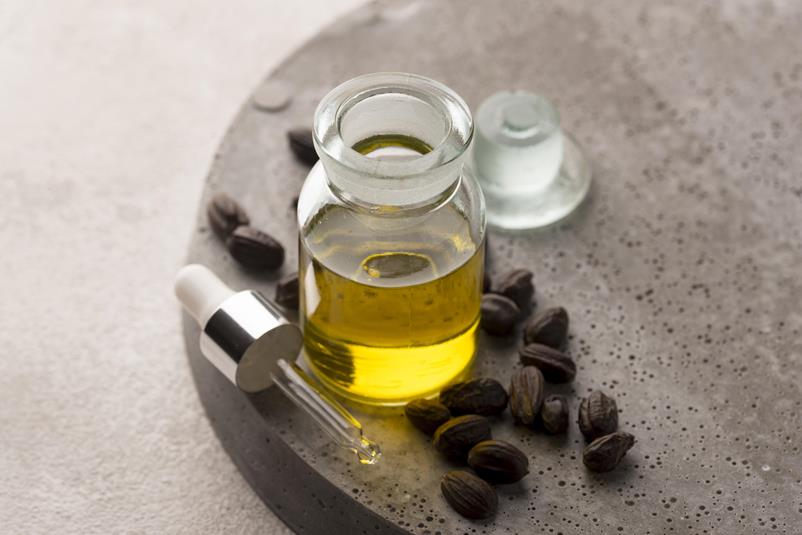
Lassativi naturali
Lassativi naturali: quali sono, dove trovarli e come utilizzarli
Lintestino è considerato un secondo cervello che influenza la salute e il benessere psicofisico: non solo è deputato all’eliminazione delle feci, ma, essendo ricco di terminazioni nervose, è in grado di elaborare e trasmette sensazioni ed emozioni.
La regolarità intestinale quotidiana non è sempre facile da ottenere e varia da individuo a individuo. In generale, sono considerate normali da 3 evacuazioni a settimana fino a 3 al giorno.
Le situazioni che possono causare stipsi sono diverse, tra cui: la dieta e i cambiamenti di routine e di clima, l’esercizio fisico e l’idratazione quotidiana, stati danimo (in particolare ansia e stress), condizioni fisiologiche come la gravidanza, patologie e l’uso di farmaci.
In queste situazioni, un valido aiuto è rappresentato dai lassativi naturali, ovvero sostanze presenti in natura che stimolano la peristalsi intestinale e ammorbidiscono le feci per facilitarne l’eliminazione.
Cosa sono i lassativi naturali
La parola lassativo deriva dal latino laxativus, ovvero destinato a sciogliere. Un lassativo naturale può essere classificato in base a:
- origine e composizione;
- sito di azione;
- intensità dell’effetto, ovvero la velocità di espulsione delle feci (drastici e purgativi sono i lassativi più veloci ed immediati che causano in poche ore rapide contrazioni intestinali; i lassativi catartici hanno un effetto intermedio tra i primi due e il lassativo blando, agendo nell’arco di pochi giorni);
- modalità di azione.
La classificazione più utilizzata riguarda la modalità di azione, a sua volta suddivisa nelle seguenti quattro categorie:
- Lassativi stimolanti o da contatto: agiscono sulle cellule della parete intestinale inducendo contrazioni che favoriscono l’espulsione della massa fecale. A questo gruppo appartengono alcune erbe e piante come senna, rabarbaro, frangula, cascara e aloe vera, che contengono gli antrachinoni, ovvero i principi attivi glicosidici responsabili dell’azione lassativa, che si osserva in genere dopo 6-12 ore dall’ingestione orale. Queste piante sono un lassativo naturale efficace in caso di stitichezza prolungata ed ostinata e si ritrovano spesso negli integratori naturali. Secondo il Ministero della Salute, il loro uso nelle dosi raccomandate è sicuro, tuttavia vanno assunti solo al bisogno e per un periodo di tempo massimo di 10 giorni.
- Lassativi formanti massa: sono costituiti da fibre insolubili che non vengono assorbite e agiscono aumentando il volume delle feci. Tuttavia, essi vanno assunti con un adeguato quantitativo di acqua per evitare l’ostruzione intestinale. A questa categoria appartengono le fibre, la metil-cellulosa, i semi di psillio, la crusca e l’agar-agar. Si possono ritrovare in formulazioni complete in sinergia con prebiotici e fermenti lattici. Ci sono poi le fibre solubili, che a contatto con l’acqua formano un gel dal potere saziante che contribuisce ad ammorbidire le feci per facilitarne il transito. Sono tra i lassativi naturali più sicuri e delicati e quindi adatti a bambini, anziani, donne in gravidanza e soggetti con colon irritabile, ma non per chi soffre di stitichezza cronica in quanto troppo blandi.
- Lassativi emollienti: agiscono ammorbidendo e lubrificando la feci. I più noti sono gli olii (ricino, oliva, mandorle, olio di vaselina o paraffina liquida ) e la glicerina. Possono essere assunti per via orale (olii) o rettale (supposte con effetto quasi immediato). Si tratta di una tipologia di lassativo piuttosto efficace, ma un uso eccessivo inibisce l’assorbimento delle vitamine liposolubili, del calcio e del fosforo.
- Lassativi osmotici: agiscono richiamando e trattenendo per osmosi acqua nel colon, rendendo le feci di una consistenza semisolida per facilitarne il transito attraverso l’intestino tenue. Si tratta di sali come il magnesio, polietileneglicoli come il macrogol e sostanze presenti in alghe, linfa di alberi (in particolare il frassino), funghi, bacche e frutti come sorbitolo e mannite. Anche il lattulosio appartiene a questo gruppo, ma si tratta di uno zucchero artificiale, in quanto si forma mediante il riscaldamento come, ad esempio, la pastorizzazione del latte. Per un effetto rapido, vanno assunti a dosi elevate e per brevi periodi, al fine di evitare disidratazione e squilibri elettrolitici. Per questo motivo, sono controindicati per bambini, anziani e in caso di patologie renali.
I lassativi possono essere acquistati nelle farmacie, parafarmacie, erboristerie e negozi specializzati anche senza prescrizione medica e sono disponibili in diverse formulazioni: liquide (sciroppi e gocce), compresse, marmellate, bustine, tisane, ecc. Per quanto riguarda i lassativi rettali si possono trovare supposte, microclismi e clisteri.
Abitudini sane e cibi come lassativi naturali
La sedentarietà può rendere l’intestino pigro. Mantenersi attivi, anche solo per 30 minuti al giorno, è fondamentale per stimolare la muscolatura dell’apparato digerente.
Un’alimentazione equilibrata, anche fuori casa, con il giusto apporto di fibre ed una corretta idratazione, favoriscono la regolarità e la motilità intestinale. Per un intestino regolare si raccomanda l’assunzione giornaliera di circa 38 grammi per l’uomo e 25 grammi per la donna (con una media di 30 grammi/die) di fibre.
Tra gli alimenti con attività lassativa troviamo:
- semi di chia e bacche(fragole e frutti di bosco): contengono sia fibre insolubili che solubili, assorbono l’acqua e formano un gel;
- frangola: il principio attivo frangulina stimola la peristalsi in modo delicato e può essere usata per lunghi periodi anche in caso di emorroidi;
- cascara: è un lassativo molto veloce ma irritante per la mucosa intestinale, in quanto provoca forti contrazioni;
- legumi (fagioli, ceci, lenticchie, piselli, arachidi ): ricchi di fibre insolubili e di acido butirrico, un acido grasso a catena corta con azione lassativa e antinfiammatoria, in grado di contrastare l’infiammazione intestinale associata a disturbi digestivi come il morbo di Crohn;
- semi di lino: ricchi di acidi grassi omega-3 e di proteine, con una buona proporzione di fibre solubili ed insolubili;
- kefir: a base di latte fermentato, è ricco di probiotici che stimolano il sistema immunitario e mantengono in salute l’apparato digerente;
- olio di ricino: una volta consumato, rilascia l’acido grasso ricinoleico, il quale attiva un recettore situato nelle cellule del tratto digerente, con conseguente aumento della peristalsi;
- olio di oliva: agisce come lassativo lubrificante in quanto forma un rivestimento nel retto, diminuendo lo sforzo durante l’evacuazione;
- verdure a foglia verde: insalata, spinaci, foglie di tarassaco migliorano la regolarità intestinale, sono ipocalorici, ma apportano molti nutrienti, vitamine, sali minerali e fibre. In particolare, sono ricche di magnesio, uno dei principali ingredienti della maggior parte dei lassativi, che richiama acqua nel lume intestinale favorendone lo svuotamento;
- rabarbaro e cassia angustifolia, meglio nota con il nome di senna alessandrina: l’effetto è dovuto all’elevato contenuto di sennosidi, composti che favoriscono l’assorbimento di liquidi all’interno dell’intestino;
- mele (specie se cotte), kiwi e agrumi: ricchi di fibre (solubili ed insolubili) tra cui la pectina, una fibra solubile che accelera il passaggio delle feci e agisce anche da prebiotico per il mantenimento di una flora batterica intestinale sana ed equilibrata;
- aloe vera: il rivestimento interno delle foglie contiene un gel a base di glicosidi antrachinonici che attirano acqua nell’intestino;
- crusca davena: è lo strato esterno del chicco davena ed è ricca di fibre solubili ed insolubili in grado di ripulire l’intestino;
- prugne: sia crude, ma soprattutto essiccate, sono tra i rimedi più utilizzati. Il loro effetto potente è dovuto alla presenza del sorbitolo, un alcol zuccherino che agisce come agente osmotico ed è scarsamente assorbito nell’intestino;
- caffè: questa bevanda aumenta la frequenza delle evacuazioni, specialmente se associata al latte in quanto forma un composto poco digeribile. Inoltre, il caffè stimola la secrezione di gastrina, che a sua volta promuove il rilascio di acido gastrico dopo il pasto e aumenta le contrazioni della muscolatura intestinale;
- acqua: una buona idratazione è fondamentale per il corretto funzionamento dell’intestino in quanto depura, purifica e ammorbidisce le feci. Un buon consiglio è quello di consumare anche molte tisane a base di erbe e frutti.
Nota: molti di questi alimenti lassativi sono presenti nell’integratore di estratti vegetali utili per la regolarità dell’intestino di Bioline Integratori: Herbal Lax. Visita lo shop per scoprire di più!
Lassativi naturali in gravidanza
La stitichezza è un disturbo multifattoriale molto comune durante la gravidanza ed interessa circa 11-38% delle future mamme. In base alla fase in cui il problema si manifesta, le cause possono essere:
- gli ormoni: il cambiamento dei livelli ormonali determina un rallentamento dell’intestino. In particolare, nella prima fase della gravidanza l’azione del progesterone determina il rilassamento della muscolatura interna dell’utero ma anche dell’intestino. Nell’ultimo trimestre, invece, la stipsi può ripresentarsi a causa dell’aldosterone, che aumenta l’assorbimento di acqua dal colon rendendo le feci più dure;
- assunzione di vitamine e ferro: il ferro presente negli integratori può causare stitichezza e disbiosi;
- pressione dell’utero in crescita sull’intestino con conseguente difficoltà di evacuazione;
- aumento di peso e cambio di alimentazione;
- riduzione del movimento e/o dell’attività fisica.
Per contrastare la stitichezza in gravidanza è importante una dieta sana ed equilibrata, con il giusto apporto di fibre e di acqua (almeno 2 litri al giorno) per aumentare il volume delle feci e facilitarne l’espulsione.
Anche una passeggiata al giorno, assieme all’assunzione di probiotici e prebiotici, contribuiscono alla regolarità dell’alvo. Tuttavia, in alcuni casi può essere utile l’uso di lassativi naturali, dopo un attento consulto con il ginecologo/a.
I lassativi, specialmente in gravidanza, devono essere usati con cautela e per un periodo limitato, onde evitare l’assuefazione, che renderebbe l’intestino della futura mamma ancora più pigro. I lassativi in questa fase devono essere efficaci e privi di effetti dannosi sul feto. Quelli maggiormente impiegati e sicuri sono quelli formanti massa e quelli osmotici a base di glicerina, lattulosio e sorbitolo.
Sono sconsigliati, invece, i lassativi osmotici a base di sali, come il citrato di magnesio o fosfato di sodio, in quanto potrebbero causare squilibrio elettrolitico e ritenzione idrica. Sono da evitare, infine, i lassativi emollienti a base di olii, specialmente quello di ricino, in quanto può causare contrazioni uterine premature.
Effetti collaterali dei lassativi naturali
Se utilizzati occasionalmente e correttamente, i lassativi naturali si possono considerare sicuri.
Tuttavia, in caso di dosaggio troppo elevato e/o uso continuativo di lassativi, possono manifestarsi i seguenti effetti collaterali:
- diarrea con crampi e dolori addominali;
- astenia;
- disbiosi;
- disidratazione;
- ipotensione;
- meteorismo e gonfiore;
- nausea;
- malassorbimento dei nutrienti;
- squilibri elettrolitici, che possono causare problemi cardiaci, colite ed emorroidi.
È importante avere uno stile di vita sano e parlare col proprio medico e farmacista per farsi consigliare il prodotto più adatto, in base alla situazione.
Bibliografia
https://www.healthline.com/nutrition/20-natural-laxatives#TOC_TITLE_HDR_2
https://www.healthline.com/nutrition/bananas-and-constipation#bottom-line
https://www.medicalnewstoday.com/articles/320940#outlook
https://www.medicalnewstoday.com/articles/324379#home-remedies
https://www.fondazioneveronesi.it/magazine/articoli/alimentazione/fibra-alimentare-fibra-salutare
https://www.uppa.it/nascere/gravidanza/stitichezza-in-gravidanza/
https://www.cure-naturali.it/enciclopedia-naturale/alimentazione/nutrizione/cibi-lassativi.html

